The Town Hall
Introduction
Text-to-speech Audio
Images
The Town Hall (image from dittytv)
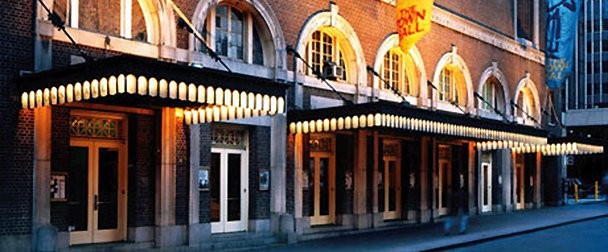
Interior of The Town Hall (image from nycago)
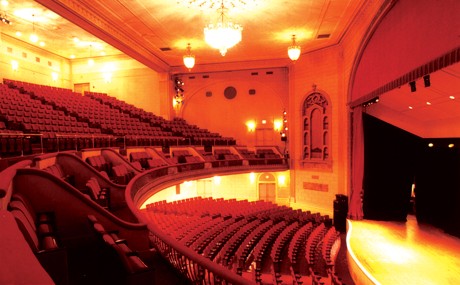
The Town Hall, 1933 (from nycago)
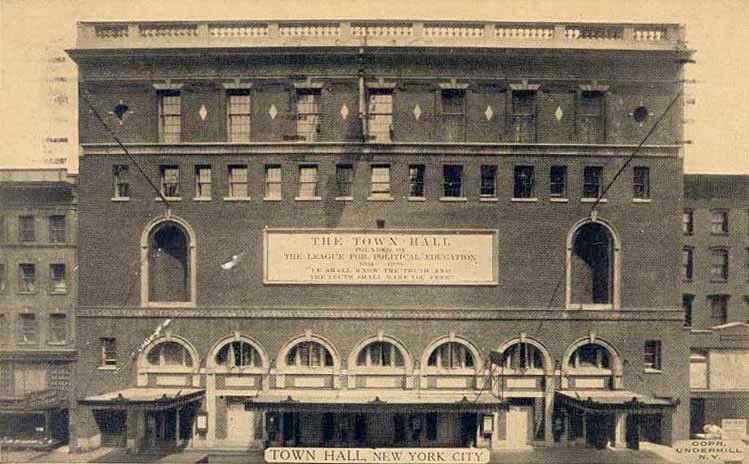
May 30, 1935 - First broadcast of America's Town Meeting of the Air (image from The Town Hall)
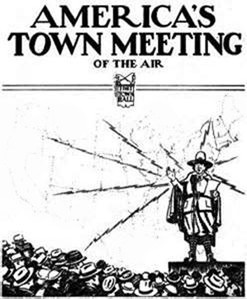
Margaret Sanger's onstage arrest at Town Hall, November 13, 1921, during a public meeting on birth control.
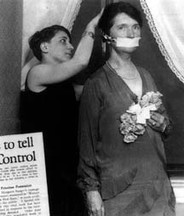
Langston Hughes spoke at the February 17, 1944 broadcast, Town Meeting: Let's Face the Race Question
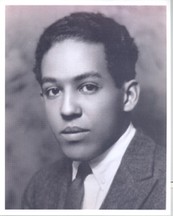
Backstory and Context
Text-to-speech Audio
In addition to public meetings and educational programs, the Town Hall also held musical and dance performances. During the 1920s, the venue hosted performances by German composer Richard Strauss, Spanish cellist Pablo Casals, dancer and founder of the Society of Spiritual Arts Ruth St. Denis, Spanish guitarist Andres Segovia, and actor and singer Paul Robeson, the son of a former slave who went on to tour Europe and America, acting in both Broadway productions and films. The Town Hall also held a memorial on August 23, 1929, for Sacco and Vanzetti, who belonged to a group of Boston political radicals and who were wrongfully executed in 1927.
During the 1930s, The Town Hall began a series of live radio broadcasts called America's Town Meeting of the Air. These broadcasts promoted the free exchange of ideas through live dialogues among four speakers on a given topic, with the live audience participating in the conversation. The first of the series was broadcast on Memorial Day, 1935, on a single station with 500,000 listeners. Only three years later, 78 stations with a total of 2.5 million listeners carried the series, which ran for over twenty years. Some Town Meetings of note include the Young America Looks Forward broadcast on February 27, 1936, chaired by First Lady Eleanor Roosevelt. The conversation promoted education and outreach to high schools and colleges. On May 8, 1938, Nobel Prize winning novelist Pearl S. Buck, Carl Sandburg, Forest Ray Moulton, and Frank Kingdon discussed "What is Humanity's Greatest Need Today?" On February 17, 1944, Langston Hughes was one of the speakers in a Town Meeting broadcast entitled, "Let's Face the Race Question". The prevention of world famine was the topic for a broadcast on May 2, 1946, at which former Mayor of New York Fiorello LaGuardia was one of the speakers. Senator Joseph McCarthy, Elias Arnall, Edward Arthur Hayes, and Leo Cherne discussed "Should the Communist Party be Outlawed in the United States" on April 3, 1947. In October of the same year, the improvement of race and religious relationships in America was the topic for a Town Meeting broadcast. Among the speakers was playwright, congresswoman, and ambassador Clare Boothe Luce. Luce was the second woman to serve as a United States Ambassador, worked as the managing editor of Vanity Fair and a war correspondent for Life magazine, and was awarded the Presidential Medal of Freedom. A Town Meeting on November 1, 1949, discussed whether America depended too much on the government for general welfare; Senator Hubert Humphrey (later Vice President to Lyndon B. Johnson) and Owen Brewster were the speakers.
Notable performances of the 1930s include Austrian tenor, composer, and conductor Richard Tauber; Russian composer, pianist, and conductor Sergei Rachmaninov; singer, actor, painter, and sculptor Fyodor Chaliapan; child prodigy pianist Ruth Slenczynski; contralto Marian Anderson, who later became the first African-American to perform at the New York Metropolitan Opera and won The Congressional Gold Medal and American Freedom Medal; violinist Isaac Stern; singer and philanthropist Alice Tully, who won the Handel Medallion and the National Medal of the Arts; and French-American soprano Lily Pons.
In the 1940s, The Town Hall hosted performances by jazz musicians Billie Holiday, Eddie Condon, Dizzy Gillespie and Charlie Parker, Sarah Vaughan and Lester Young, and Burl Ives. Notable performances of the 1950s included actress and singer Lotte Lenya, the Billy Taylor Trio, jazz legend Duke Ellington, flamenco guitarist Carlos Montoya, African-American opera singer Betty Allen, the debut of soprano Leontyne Price with the American Opera Society, the Thelonius Monk Orchestra, singer and pianist Nina Simone, and Russian composer and Soviet exile Igor Stravinsky. Bob Dylan's first major concert was held at The Town Hall on April 12, 1963. Other folk singers who performed at the Hall during the '60s include Judy Collins and Pete Seeger. Cabaret singers Mabel Mercer and Bobby Short performed together on May 18, 1969.
The Town Hall began the Legendary Ladies series on February 11, 1973, with Bette Davis. The series later featured Joan Crawford, Sylvia Sydney, Myrna Loy, Rosalind Russell, and Lana Turner. During the 1980s, the Blue Note jazz label was revitalized, and the Hall hosted live recordings featuring Ron Carter, Tony Williams, Herbie Hancock, tenor saxophonist Joe Henderson, trumpeter Freddie Hubbard, flutist James Newton, and vibraphonist Bobbie Hutercherson. Other performances during the decade included the Philip Glass Ensemble, opera soprano Harolyn Blackwell, classical guitarist Sharon Isbin, Gene Harris and the Philip Morris Superband, and the Not Just Jazz series featuring composer, singer, filmmaker, and choreographer Meredith Monk. A musical of Archy & Mehitable was performed at the Town Hall in 1989.
Throughout the 1990s and early 2000s, the venue has continued to host jazz, opera, and classical performances, as well as rock concerts and comedy shows, including Eddie Izzard and Robin Williams. The Town Hall also features educational outreach programs focusing on arts in education for New York City public schools. In addition to performances, the Town Hall offers free guided tours including information about the history and architecture of the venue and its role in the history and culture of New York, as well as in the history of human rights.
